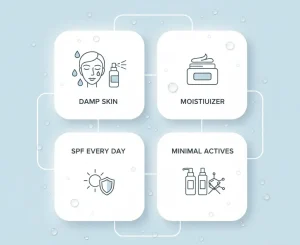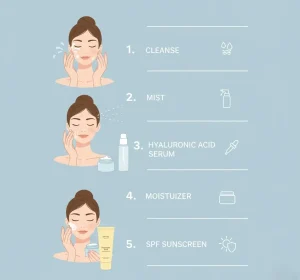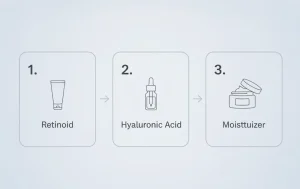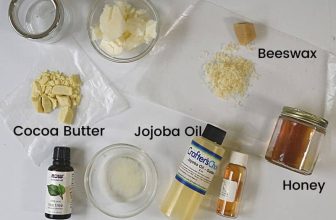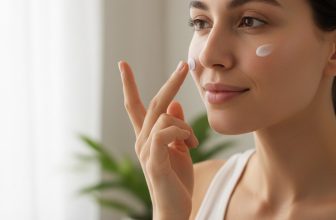When to Use Hyaluronic Acid Serum for Hydrated, Glowing Skin
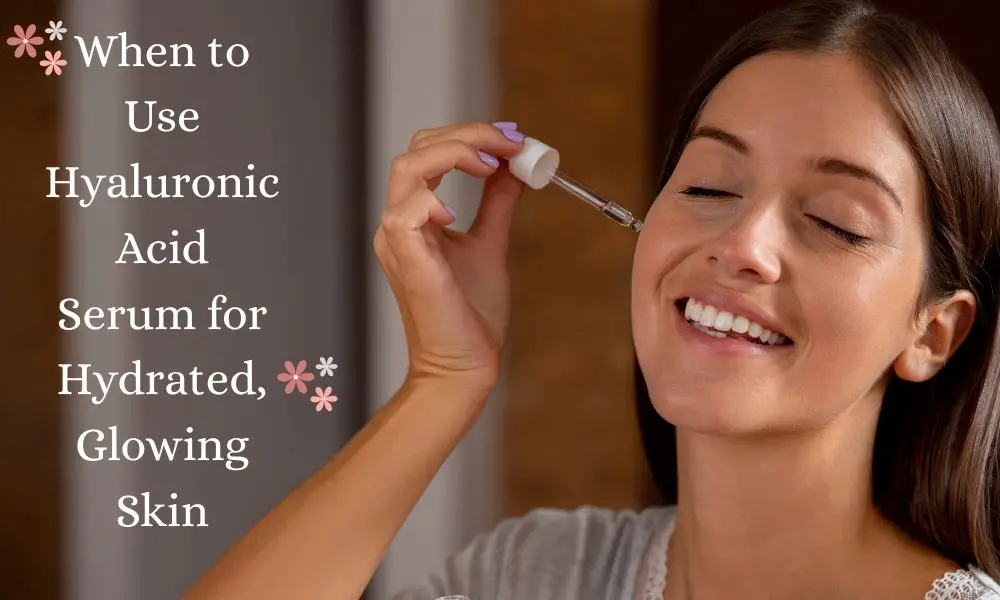
When to Use Hyaluronic Acid Serum for Maximum Skin Benefits
Hyaluronic acid is a true skincare superstar since it can hold more than 1,000 times its weight in water. This is why it is an essential part of getting skin that is intensely hydrated, plump, and radiant. Its popularity isn’t just hype; it delivers visible results.
A common question we hear is, When is the best time to incorporate it into a routine? Hyaluronic acid works even better when mixed with active ingredients like Vitamin C, Niacinamide, Retinol, and even Tretinoin that you can only get with a prescription. Hyaluronic acid works best when combined with other potent ingredients. This guide will show you when and how to do that.
When to Use Hyaluronic Acid Serum
It’s essential to know the right time and way to use this hydrating hero to get the most out of it. Let’s talk about when to use hyaluronic acid serum to get that healthy glow that everyone wants.
Use in the Morning or at Night
The best part is that hyaluronic acid is safe to use in the morning and at night.
- Morning Use: Putting it on in the morning helps your skin stay moist all day. It acts as a continuous drink of water for your skin, protecting it from the dehydrating effects of air conditioning, heating, and environmental pollution. It creates a smooth, hydrated canvas for makeup.
- Nighttime Use: Putting it on at night helps your skin’s natural healing process. Your skin heals itself as you sleep. Hyaluronic acid makes this process work better by keeping your skin hydrated for longer, helping to fix the moisture barrier, and making your skin smoother and fuller by morning.
Using it twice a day is best for getting the most moisture.
Step-by-Step Application Order
The order in which you put on your skin care products is essential. For hyaluronic acid, the golden rule is to use it to dampen skin. Hyaluronic acid is a humectant, which means it pulls moisture from the air around it. Applying it to a dry face can cause it to draw moisture from the deeper layers of your skin, which can have the opposite effect and lead to more dryness.
Here’s the correct step-by-step order:
- Cleanse: Start with a clean face. Get rid of grime, oil, and makeup with a gentle cleanser.
- (Optional) Tone: If you use a toner, put it on now.
- Dampen Skin: Use a moisturizing facial spray or water to wet your face lightly. After washing your face, you can also just leave it a little wet.
- Apply Hyaluronic Acid Serum: Put 2–3 drops of the serum on your hands and gently pat it onto your damp face and neck.
- Put on other serums: If you’re putting on more than one serum, do it now. The following sections will go over the rules for layering in more detail.
- Moisturize: Moisturizing is essential! Use your preferred moisturizer after that to lock in the hyaluronic acid and all the moisture it brings. A moisturizer keeps the moisture from evaporating by providing a barrier.
- Apply SPF (Morning Routine): In the morning, always finish with a broad-spectrum sunscreen with SPF 30 or higher.
Frequency of Use and Adjusting for Skin Type
Hyaluronic acid is generally well-tolerated by all skin types.
- For Normal to Dry Skin: Can typically benefit from using it twice daily, in the morning and at night.
- For oily to combination skin, once a day may be plenty. You can try several things to determine what works best. If your skin feels overly sticky or wet, cut back to once a day.
- For Sensitive Skin: Since it’s a substance naturally found in the skin, it’s usually non-irritating. However, it’s always smart to patch-test a new product first.
Common Mistakes to Avoid
- Applying to Dry Skin: This is the most frequent mistake. Always ensure your skin is damp first.
- Not using moisturizer: The hyaluronic acid can bring water to your skin, but without a moisturizer on top, that water can evaporate, making your skin feel tighter than before.
- Using Too Much: A little bit goes a long way. Putting on too much can leave a sticky or tacky residue without giving you any more benefits.
Combining Hyaluronic Acid with Vitamin C
Hyaluronic acid and Vitamin C are a traditional combination for getting skin that looks bright and healthy. This duo works together to target different concerns, resulting in healthier-looking skin.
Why It’s a Powerful Duo
So, can I use hyaluronic acid with vitamin C? Yes, and you absolutely should! This pairing is a favorite among dermatologists.
- Vitamin C is a powerful antioxidant that brightens the skin, helps fade dark spots, and protects against environmental damage.
- Hyaluronic Acid is the ultimate hydrator, plumping the skin and smoothing the appearance of fine lines.
Using a vitamin C and hyaluronic acid serum together gives you comprehensive benefits. Vitamin C works on your skin’s tone and texture, while hyaluronic acid provides a surge of moisture that makes skin look and feel supple and radiant.
Correct Order of Application
To maximize effectiveness, apply your products from the thinnest consistency to the thickest. Vitamin C serums are typically formulated at a lower pH to remain stable and should be applied first.
- After cleansing, apply your Vitamin C serum to dry skin.
- Please wait a minute for it to absorb fully.
- Mist your face with water to dampen it.
- Apply your hyaluronic acid serum.
- Finish with your moisturizer and sunscreen.
When to Use
You can use this mix every morning because it is mild enough. Vitamin C’s antioxidant properties are suitable for your skin during the day since they help protect it from UV and free radical damage. For a simple and effective morning routine, pair this duo to start your day with a glow.
Morning Routine Suggestion
This combination is perfect for a morning routine because Vitamin C’s antioxidant properties help protect your skin from daytime environmental aggressors.
- Cleanse: Gentle Cleanser
- Treat: Vitamin C Serum
- Hydrate: Hyaluronic Acid Serum (on damp skin)
- Moisturize: Your favorite daily moisturizer
- Protect: Broad-Spectrum SPF 30+
Hyaluronic Acid with Tretinoin or Retinol
Retinoids, including over-the-counter retinol and prescription tretinoin, are the gold standard for anti-aging and acne treatment. However, they are known for causing dryness, irritation, and peeling—often called “retinization.” This is where hyaluronic acid becomes an essential supporting act.
Why Retinoids Make Skin Itchy
Retinoids speed up the process of skin cells dying and being replaced. This quick exfoliation might damage your skin’s moisture barrier, which can cause it to lose water, become flaky, and be more sensitive.
How Hyaluronic Acid Works: Calm the Skin
When you use tretinoin and hyaluronic acid together, it can make the adjustment time a lot easier. Hyaluronic acid helps in the following ways:
- Counteracting Dryness: It adds back moisture that retinoids can take away.
- Helping the Skin Barrier: Keeping the skin moist helps strengthen the barrier, which makes it less likely to get irritated.
- Soothing and calming: The plumping moisture makes skin feel better and less tight.
The correct order of use
When choosing whether to use retinol before or after hyaluronic acid, the goal is to reduce the chance of discomfort without making the retinoid less effective.
The ideal way is to use: Retinoid → Hyaluronic Acid → Moisturizer.
- After cleansing, wait for your skin to be dehydrated. Applying retinoids to dry skin can increase penetration and lead to more irritation.
- Apply a pea-sized amount of your tretinoin or retinol.
- Wait 20-30 minutes for it to absorb.
- Use a face mist to dampen your skin.
- Put on your hyaluronic acid serum.
- Next, use a thick, moisturizing cream.
Advice for Beginners and Those with Sensitive Skin
Try the “sandwich method” if you are new to retinoids or have highly sensitive skin. Put on a light layer of moisturizer, then your retinoid, and then another layer of moisturizer. , then your retinoid, and then another layer of moisturizer. You can also apply hyaluronic acid serum before your retinoid to create a hydrating buffer. Once your skin has acclimated, you can switch to the standard application order.
Is Hyaluronic Acid Good for Acne?
A lot of people think that people with acne-prone skin need to dry it out. In fact, dry skin often produces extra oil to make up for it, which causes more breakouts and clogged pores. So, is hyaluronic acid suitable for treating acne? Yes, it is a great choice.
It keeps your skin moist without blocking your pores.
Hyaluronic acid gives your skin moisture without adding oil. It won’t clog your pores because it doesn’t cause acne. This lets you keep your skin moist and helps it recover without worrying about making the congestion worse.
Benefits for skin that is oily or prone to acne
Hyaluronic acid can help control sebum production by keeping the skin properly hydrated. Furthermore, many potent acne treatments (like salicylic acid and benzoyl peroxide) can be harsh and drying. Using hyaluronic acid helps repair the skin barrier after these treatments, reducing irritation and promoting a healthier complexion that is less prone to breakouts.
Hyaluronic Acid and Niacinamide Together
Hyaluronic acid and niacinamide work well together, too. Both are gentle, water-based, and work on different but related skin problems.
Why This Mix Makes Your Skin Look Better and Hydrated
I’m still not sure if I can use niacinamide and hyaluronic acid together. This pair is definitely a dream team for getting skin that is clear, balanced, and nourished.
- Niacinamide, often known as vitamin B3, is a valuable component that helps control oil, make pores look smaller, reduce redness, and even out skin tone.
- Hyaluronic Acid is all about giving you pure moisture.
A niacinamide and hyaluronic acid serum routine gives you both refinement and moisture. The result is skin that looks smoother, brighter, and feels perfectly balanced.
The Best Way to Apply
Because they are both water-based, the order might change. But one fantastic approach to layering is to put hyaluronic acid on damp skin first to make a base that is already hydrated. This can help the niacinamide get into your skin better.
- Cleanse and mist your face.
- Apply hyaluronic acid serum.
- Apply your niacinamide serum.
- Seal everything in with a moisturizer.
This combination can be used once or twice daily.
best niacinamide with hyaluronic acid serum to try
- BYOMA Brightening Serum: This serum contains niacinamide and hyaluronic acid, which brighten and hydrate the skin. Its unique ceramide complex helps restore the skin barrier.
- The Ordinary Serum Favorites Set: This popular set frequently comes with their Niacinamide 10% + Zinc 1% and their Hyaluronic Acid 2% + B5, so you get both of the essentials in one easy-to-use box.
- 5% Niacinamide Serum from Minimalist: This serum is excellent for beginners or people with sensitive skin. It addresses acne spots and uneven skin tone while also giving your skin a little nourishment.
Best Hyaluronic Acid Serums to Try
Choosing a serum with a good formula can make all the difference. PCA SKIN is a brand that dermatologists created and is known for making skincare that works and is backed by science. If you want a high-quality PCA hyaluronic acid serum, their line has advanced formulas that work better.
1. PCA SKIN Hyaluronic Acid Boosting Face Serum
This sophisticated serum has three levels of hydration that work right away and over time.
2. PCA SKIN Overnight Face Mask
For an intensive dose of moisture while you sleep, this mask is an ideal anti-aging and brightening treatment.
3. PCA SKIN Lip Plumper Serum
Don’t neglect your lips! This treatment uses the power of hyaluronic acid to restore volume and hydration.
Last but not least, here are some tips for layering hyaluronic acid the right way.
Follow these easy tips to get the most out of your hyaluronic acid serum:
- Please put it on wet skin. This gives the serum the water it needs to keep your skin’s surface moist.
- Always follow up with moisturizer. This is a non-negotiable step to lock in all that hydration.
- Use SPF. If you are using hyaluronic acid in the morning, especially with Vitamin C or after a nighttime retinoid routine, sunscreen is essential to protect your skin.
- Avoid mixing too many actives at once. Introduce new products one at a time to see how your skin reacts and to avoid overwhelming your skin barrier.
FAQs Section
When should I apply hyaluronic acid in my routine?
Please put it on after cleaning and toning, but before your moisturizer. For it to work well, you need to put it on damp skin.
Can I use hyaluronic acid every day?
Yes, you can use hyaluronic acid every day, in the morning and at night.
Can I put hyaluronic acid on after retinol?
Yes. Hyaluronic acid can help calm and moisturize the face after retinol, which can make it dry out. This is a really good mixture for keeping your skin barrier healthy.
Does hyaluronic acid help get rid of acne scars?
Hyaluronic acid can help make atrophic (indented) acne scars look better by filling in the skin, which can make the indentations less apparent. But it doesn’t get rid of or permanently treat the scar tissue itself.
Can I use hyaluronic acid with other serums?
Yes, it works well with most other serums, such as Vitamin C, niacinamide, and peptides. It works well with any skincare program.
In conclusion
Hyaluronic acid is a simple ingredient that can be used in almost any skincare routine and is suitable for your face in general. You can get the most out of it if you know when and how to use it: on damp skin, sealed with a lotion, and paired with actives that work well together.
It works best when combined with Vitamin C to make your skin brighter, with retinoids to help fight aging, or with niacinamide to keep your skin balanced and clear. You can get the best skin you’ve ever had by picking the right serum and applying it in the right way.
Are you ready to step up your skin care routine? One of the hyaluronic acid serums above has been recommended by dermatologists.

